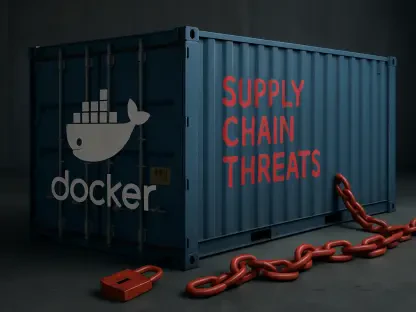Maryanne Baines, a renowned expert in cloud technology, shares her insights on the current state and future of AI adoption within enterprises. Her discussions highlight the challenges and opportunities that AI presents, particularly in the context of cloud integration and data connectivity for businesses.
How would you describe your outlook on the future of AI in enterprises and small businesses?
I am optimistic about AI’s potential to transform enterprises and small businesses. It holds the promise of driving productivity and growth across various sectors. Despite the slow start, I see AI becoming a pivotal element in many business processes as more organizations overcome initial hurdles.
Why do you believe the adoption of generative AI in enterprise customers has been slower than expected?
One of the primary reasons is data connectivity issues. AI’s real power comes from integrated data. For instance, AI needs to access multiple platforms like CRM, inventory, and financial systems to effectively manage customer success. Currently, many enterprises haven’t achieved this level of integration, which slows adoption.
What challenges do enterprises face in connecting data for effective AI implementation?
Data fragmentation is a significant challenge. Most businesses operate numerous SaaS applications, and their data is often siloed within these systems. This fragmentation makes it difficult to create AI agents that can access the comprehensive data needed for effective decision-making and automation.
Can you explain why current enterprise AI solutions, particularly bots and tools, are not meeting expectations?
Many AI solutions have not matured to the point of providing tangible value. Poor data quality and lack of integration mean that AI agents struggle to perform tasks effectively. As a result, businesses are frequently disappointed when these tools fail to deliver promised efficiencies.
How does data fragmentation in businesses impact the effectiveness of AI agents?
When data is not unified, it limits AI’s capacity to analyze and react accurately. Fragmented customer, order, and financial data lead to incomplete insights, reducing an AI agent’s ability to make informed decisions or automate tasks effectively.
What opportunities do you see for Kaseya and MSPs in overcoming data connectivity issues for small businesses?
There’s a real opportunity for Kaseya and MSPs to step in and provide solutions that integrate these disparate data sources. By developing tools that seamlessly connect various applications, they can create a cohesive data environment, enabling small businesses to unlock the full potential of AI.
How significant is the abandonment rate of generative AI projects according to Gartner, and what are the common reasons?
Gartner has noted a high abandonment rate, nearly one in three proofs-of-concept. Common reasons include poor data quality, escalating costs, and lack of clear business value, which can make it difficult for companies to justify continued investment without seeing immediate returns.
What factors are contributing to the difficulties in calculating business impact and ROI for gen-AI projects?
The lack of initial data integration and poor risk controls make it challenging to define clear metrics for success. Without a comprehensive understanding of AI’s potential benefits and a method to measure them accurately, quantifying ROI becomes difficult, if not impossible.
How does change management play a role in AI adoption, and what are the challenges involved?
Change management is crucial; implementing AI requires businesses to adapt both technically and culturally. Employees must learn to trust and effectively use new tools, but often, day-to-day demands leave little time for training, leading to resistance and high abandonment rates.
Can you provide an example of how corporate governance issues affect AI adoption?
Corporate governance impacts can be seen in how AI agents are integrated. For instance, clearly defining interaction rules for AI can prevent misuse and ensure compliance. Without strong governance frameworks, organizations risk data breaches and improper use of AI.
How has Kaseya integrated AI into its 365 Platform, and what benefits has it seen among MSPs?
Kaseya’s integration of Cooper AI into its platform has shown promising results, such as labor time savings in repetitive tasks and improved tech utilization. This has led to significant efficiencies for MSPs, enhancing their service delivery capabilities.
Why is Kaseya focusing on driving adoption and change management for its customers?
Encouraging adoption and managing change are vital for customers to fully utilize AI solutions. By investing in these areas, Kaseya ensures their clients can smoothly transition to AI-driven processes, maximizing benefits while minimizing disruption.
What steps is Kaseya taking to encourage AI adoption among MSPs and internally?
Kaseya is committed to creating intuitive software and developing comprehensive training programs. By doing so, they facilitate smoother transitions for MSPs, ensuring AI solutions are adopted effectively, enabling better service outcomes for their end clients.
What is meant by “pre-agentic AI,” and how does it relate to Kaseya’s current AI plans?
“Pre-agentic AI” refers to AI at its nascent stage, where it’s still being refined and integrated into business processes. Kaseya aims to push the development of AI from this stage towards more advanced functionalities, accelerating their AI roadmap with practical applications.
What are your priorities for accelerating Kaseya’s AI roadmap in your new role as CEO?
My priority is to focus on the innovative development of AI that meets concrete business needs. This involves ensuring that our AI solutions are practical, integrating more robust data connectivity, and continuing to facilitate seamless adoption and change management processes.
How does the cloud’s maturation over two decades compare to your expectations for AI development during your tenure?
I expect AI’s development to follow a similar trajectory. Just as the cloud became indispensable over time, AI’s growth will require ongoing innovation and adaptation. In my tenure, I foresee AI becoming as integral to businesses as cloud technology is today.









